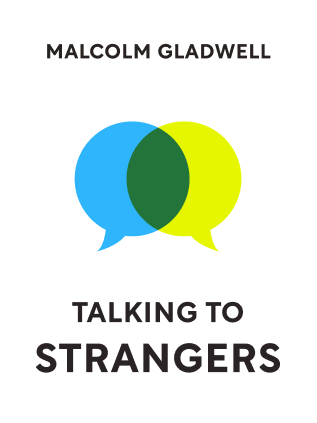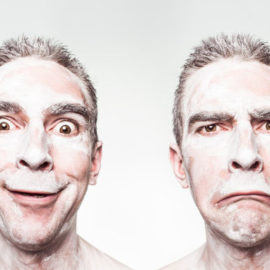

This article is an excerpt from the Shortform book guide to "Talking to Strangers" by Malcolm Gladwell. Shortform has the world's best summaries and analyses of books you should be reading.
Like this article? Sign up for a free trial here .
Do you know how to tell when someone is lying? Do you think you’re good at it? What does science tell us about our ability to accurately tell when someone is lying?
Science says we’re not very good at how to tell when someone is lying. Learn when you’re better at it, and what red herrings throw you off course.
How to Know if Someone Is Lying
In an effort to understand and analyze the Truth-Default Theory and how to know when someone is lying, psychologist Tim Levine used hundreds of versions of the same basic experiment (referred to here as the Trivia Experiment). Here is how the Trivia Experiment works:
- Levine invites participants to a laboratory. They are told that if they can answer a trivia test correctly, they will win a cash prize.
- Each participant is given a partner. The participants don’t know that the partner works for Levine.
- The test is administered by an instructor named Rachel. The participants don’t know that Rachel also works for Levine.
- Halfway through the test, Rachel leaves the room. The partner points to an envelope lying on the table and asks the participant if they should cheat on the test. The participant is given the opportunity to choose whether or not to cheat.
- After the trivia test is over, Levine interviews the participant. He asks the participant if they cheated during the test.
- After the completion of the interviews, Levine goes back to watch the tapes and categorizes them into two categories: Liars and truth-tellers.
- Other people then watch the interview tapes and try to decipher which participants are lying about cheating and which participants are telling the truth. How can you tell if someone is lying?
Levine’s conclusion: How to Know When Someone Is Lying
When watching the tapes, most people will guess that each person interviewed is telling the truth, unless they see a behavior that distinctly makes them think the person is lying. In other words, the viewers default to assuming truth—they naturally operate under the assumption that the majority of participants are honest. This is the Truth-Default Theory (TDT). Because of this default, viewers are more accurate at identifying truth-tellers than liars. How do you know if someone is lying? You often don’t.
Truth-Default Triggers: The Key to How to Tell if a Person Is Lying
The Trivia Experiment itself is an example of how TDT plays a role in human behavior. Each participant that goes through the trivia test knows she is part of an experiment. Suddenly Rachel leaves the room and just so happens to leave the answers on the desk. The participant’s partner, who she’s never met before, suggests cheating. Wouldn’t you expect at least some of these college-educated participants to be suspicious at that point?
Every once in a while, a participant might catch on that one or more aspects of the trivia test is a setup, part of the experiment. However, they almost never assume that their partner is involved. Why not?
Levine concluded that a participant can have a suspicion, or even a series of doubts, but they will continue to believe the truth of the situation. The only way a person will snap out of the truth-default is if they gather enough doubts—if their suspicions rise to a level that they cannot explain away or rationalize. He called this a “trigger.” For you to understand how to tell if a person is lying, you need to have a low trigger point.
So when a person (let’s call him Fred) comes across a stranger, Fred will generally believe what the stranger says. Even if he doubts the stranger several times, Fred will continue to default to the assumption that the stranger is telling the truth. That truth-default will hold until Fred gathers enough doubts to push him past the trigger point. If there are not enough red flags to trigger Fred to notice a stranger’s lie, it is only human that he would fail to identify the stranger’s deception. It’s hard to learn how to tell if someone is lying.
Why Are We so Bad at Knowing if Someone Is Lying?
After the Trivia Experiment, Levine was concerned with the following questions:
- How is it that, over the course of human evolution, humans haven’t gotten better at detecting a lie?
- Wouldn’t it be useful for human survival to be able to identify when you’re being deceived?
Ultimately, Levine concluded that human beings do not need to identify lies (from a survival standpoint) as much as we need to be able to have efficient communication and trusting social encounters. We often don’t need to know how to tell when someone is lying.
He argues that truth-default is highly advantageous to survival because it allows for effective communication and social coordination. From an evolutionary standpoint, being vulnerable to deception does not threaten human survival, but not being able to communicate does threaten human survival. Understanding how to know if someone is lying isn’t the most important survival skill.
Mismatching and How It Works
How can you tell if someone is lying? Remember Tim Levine’s Trivia Experiment, in which participants were asked whether or not they cheated when Rachel left the room and then viewers were asked to determine which participants were lying about cheating on the test.
The experiment measures how accurate the viewer is at detecting the participant’s lie. In this experiment, Levine found that the viewer correctly detects a participant’s lie 54% of the time on average. That percentage is only slightly better than chance. Why is that? How can you tell when someone is lying?
One answer is Truth-Default Theory. But Levine felt as though there had to be another reason that people tend to mistake lies for the truth. In particular, Levine was perplexed by the pattern that most lies are not detected until after the fact. (For example, Scott Carmichael missed all the clues that Ana Montes was a Cuban spy in the moment. But later, Carmichael could recognize those red flags.) In an effort to explain this pattern, Levine returned to the tapes of his Trivia Experiment participants.
Participants: Sally and Nelly
Two of Levine’s participants were particularly interesting to study. We will call one Sally and one Nervous Nelly.
- When asked if she cheated, Sally took a lot of pauses, started to blush, avoided eye contact, and appeared confused. Every viewer who watched Sally’s interview accurately identified that Sally was lying.
- When asked if she cheated, Nervous Nelly gave rambling answers, obsessively played with her hair, became defensive, and acted agitated. Every viewer who watched Nervous Nelly’s interview suspected that Nelly was lying. But Nelly was telling the truth.
There were a lot of participants like Nelly and Sally, who got the same response from nearly every viewer. In fact, some participants were judged correctly by 80% of judges are more. And some participants were judged incorrectly by 80% of judges or more. Why?
How to Know if Someone Is Lying: Don’t Depend on Demeanor
Levine argues that this is an example of a judge using demeanor as a clue to someone’s honesty—an example of the assumption of transparency. These viewers were operating under the assumption that a liar in reality would behave like a liar on Friends.
A person will be judged as honest if she is:
- Well-spoken
- Confident
- Friendly/Engaging
- Has a firm handshake
A person will be judged as dishonest if she is:
- Nervous
- Fidgety
- Inarticulate
- Disengaged
The participants that were judged correctly 80% of the time were those whose internal state and external demeanor were matching. For example, Sally matched—she was being dishonest and she was acting dishonestly. The participants who were judged incorrectly were mismatched. For example, Nervous Nelly mismatched—she was being honest but her demeanor seemed stereotypically dishonest. This is why it’s so hard to learn how to tell when someone is lying.
In other words, the average person is only bad at detecting lies when the sender is mismatched. Mismatching confuses the average person—it is at odds with the natural assumption of transparency. When a liar acts stereotypically honest or an honest person acts stereotypically dishonest, we don’t know how to make sense of it.
Law Enforcement Viewers
It makes sense that the average person might not be a professional when it comes to detecting lies. But what about law enforcement officials that are supposed to be professionals at detecting lies, such as interrogators? Wouldn’t they be better judges than the average adult? To answer this question, Levine found interrogators with over 15 years of experience and asked them to watch the Trivia Experiment participant’s interviews. Do professionals know how to tell when someone is lying?
The Results
- On matched participants (those who acted accordingly to their level of honesty), the interrogators were 100% accurate. The average adult would only be 70-75% accurate with the matched participants.
- On mismatched truth-tellers (Nervous Nellies who tell the truth in a way that seems dishonest), the law enforcement officials were only 20% accurate.
- On mismatched liars (liars who act honest), the law enforcement officials were only 14% accurate.
Law enforcement officials are just as bad or even worse at interpreting strangers with mismatched behavior than the average adult. This is distressing because these are the people charged with determining a stranger’s innocence or guilt. It’s extremely difficult to learn how to know if someone is lying.
You have to wonder if this is part of the reason there are so many cases of wrongful convictions (like Amanda Knox, discussed below) and unsuccessful bail decisions (like Patrick Walker). Mistakes like these might seem random, but Levine’s research proves that they aren’t random at all. These mistakes are a result of the systematic discrimination against people who, often unknowingly, don’t conform to our ridiculous assumption of transparency.

———End of Preview———
Like what you just read? Read the rest of the world's best book summary and analysis of Malcolm Gladwell's "Talking to Strangers" at Shortform .
Here's what you'll find in our full Talking to Strangers summary :
- Why we don't understand strangers
- How to talk to strangers in a cautious way so you don't get fooled
- How Hitler deceived so many world leaders






